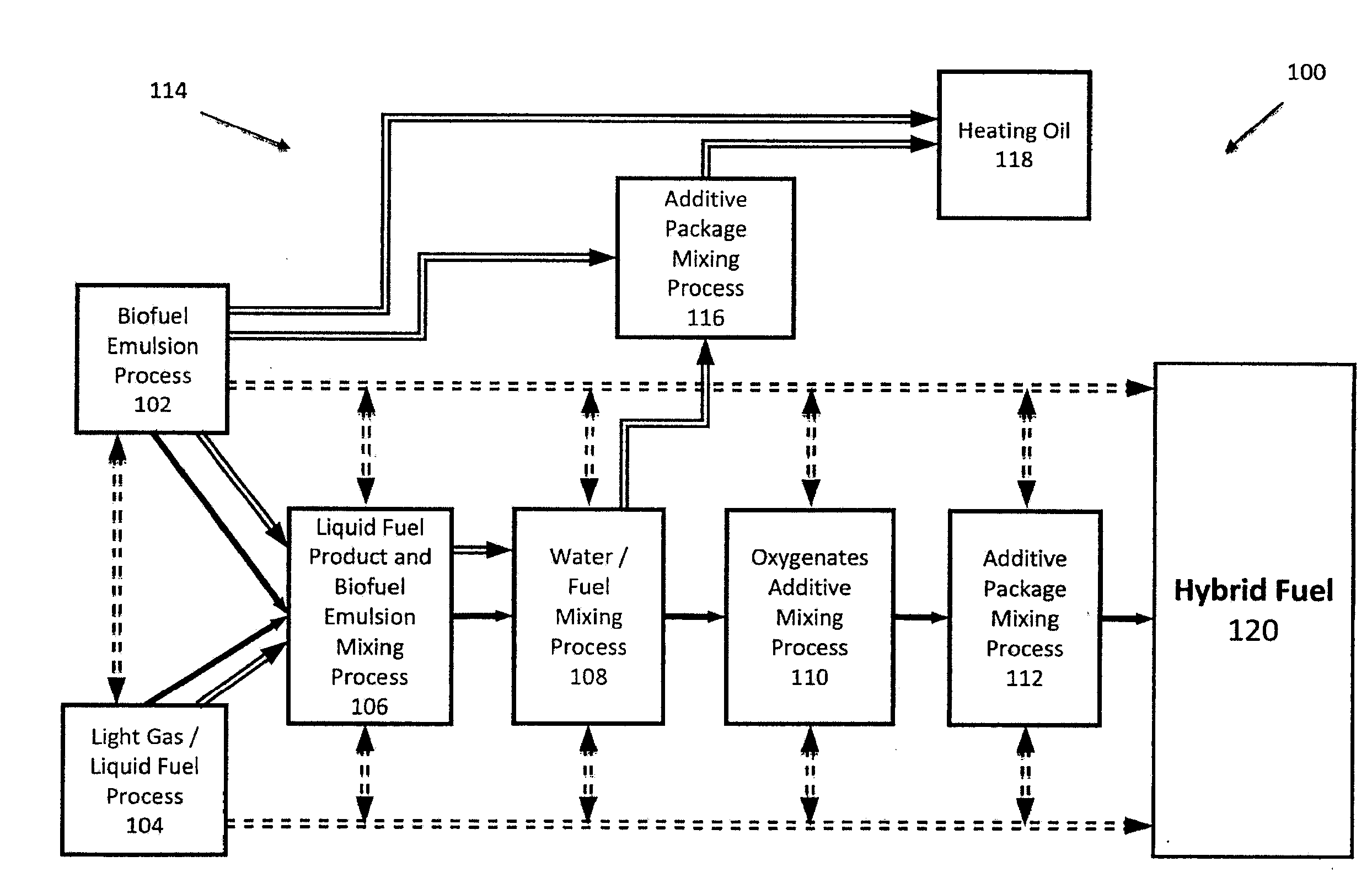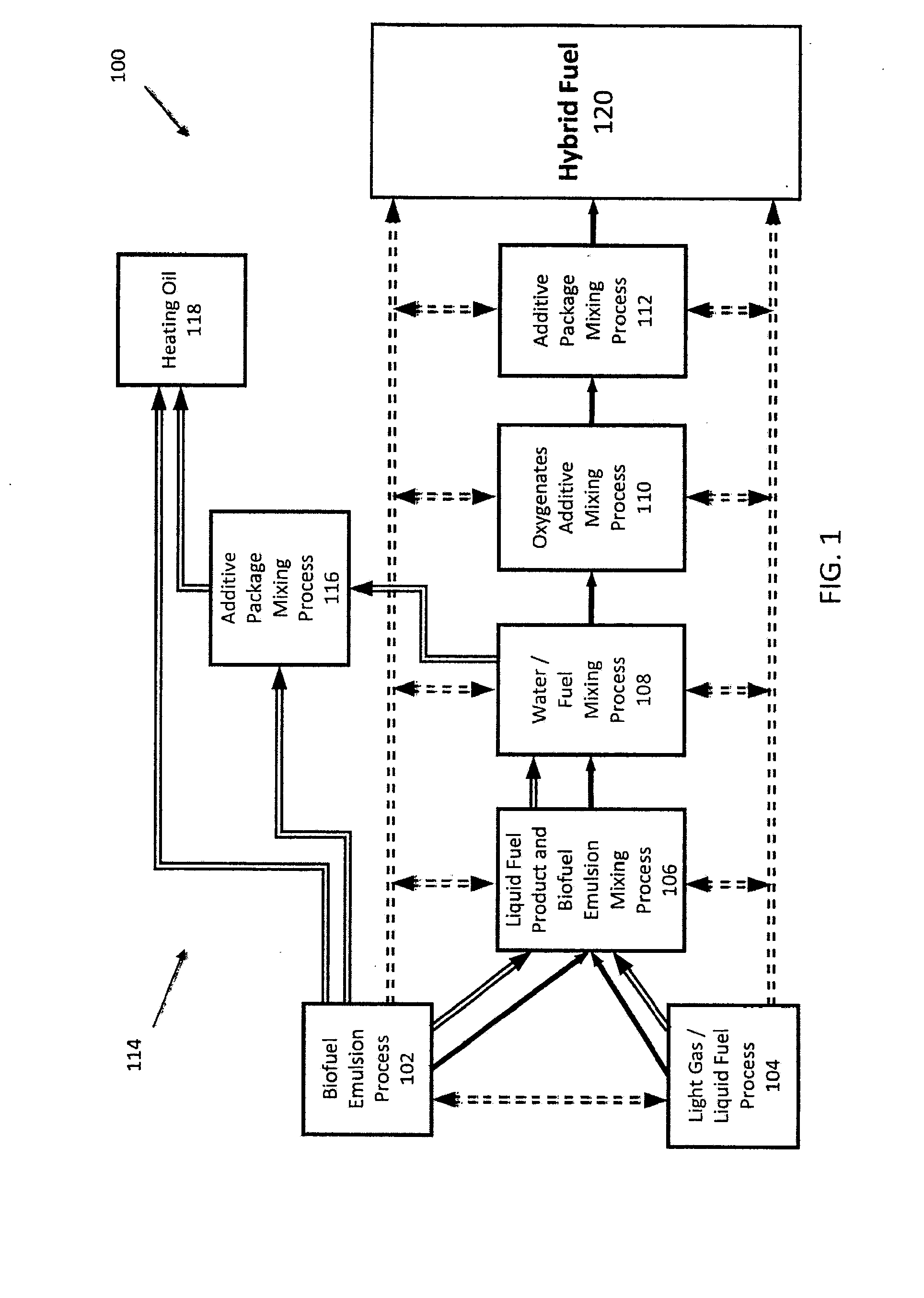Hybrid Fuel and Method of Making the Same
a hybrid fuel and fuel technology, applied in the direction of hydrocarbon oil cracking process, sustainable manufacturing/processing, combustion air/fuel air treatment, etc., can solve the problems of limited commercial potential, high cost, and high cost of natural gas produced along with oil, so as to achieve low cost and low aromatic compound levels. , the effect of low viscosity
- Summary
- Abstract
- Description
- Claims
- Application Information
AI Technical Summary
Benefits of technology
Problems solved by technology
Method used
Image
Examples
Embodiment Construction
[0050]The term “biogas” is used herein to include any non-inert gas that can be produced by the biological degradation of organic matter. Non-limiting examples of biogas are hydrogen, methane, and carbon monoxide. Biogases, as used herein, also include other gaseous petroleum-based products such as ethane and ethylene, as well as decomposition products of agricultural waste such as wood chips, grains, grasses, leaves, and the like. The term “biogas” is also used herein to include the same gases that are obtained from other sources. One example is methane associated with coal, commonly known as “coal bed methane,”“coal mine methane,” and “abandoned mine methane.” In some embodiments, such methane is derived by bacterial activity or by heating.
[0051]The term “natural gas”, as used herein, is intended to mean a collection of materials that is formed primarily of methane, but it can also include ethane, propane, butane and pentane. The composition of natural gas can vary widely (e.g., v...
PUM
 Login to View More
Login to View More Abstract
Description
Claims
Application Information
 Login to View More
Login to View More - R&D
- Intellectual Property
- Life Sciences
- Materials
- Tech Scout
- Unparalleled Data Quality
- Higher Quality Content
- 60% Fewer Hallucinations
Browse by: Latest US Patents, China's latest patents, Technical Efficacy Thesaurus, Application Domain, Technology Topic, Popular Technical Reports.
© 2025 PatSnap. All rights reserved.Legal|Privacy policy|Modern Slavery Act Transparency Statement|Sitemap|About US| Contact US: help@patsnap.com



